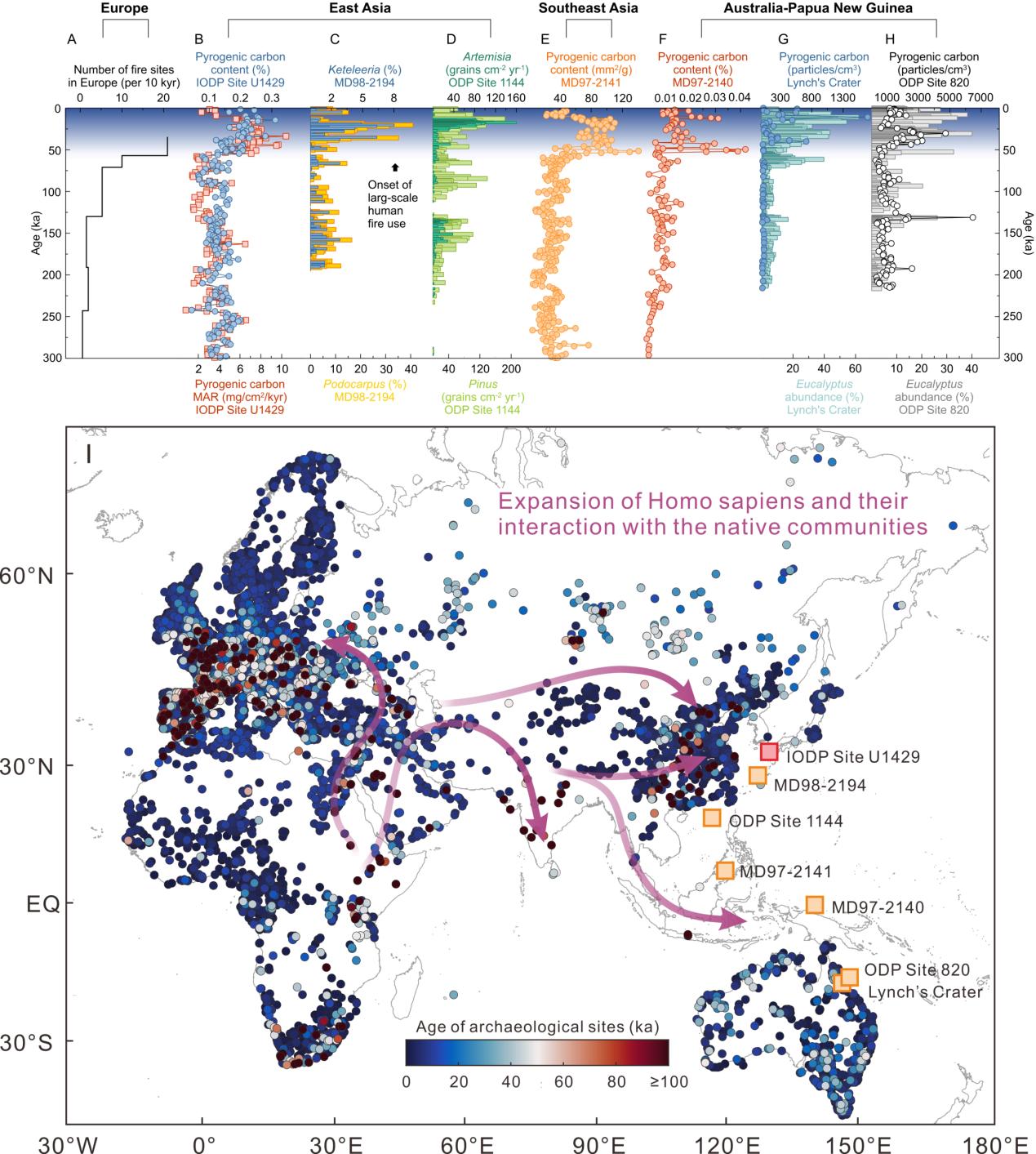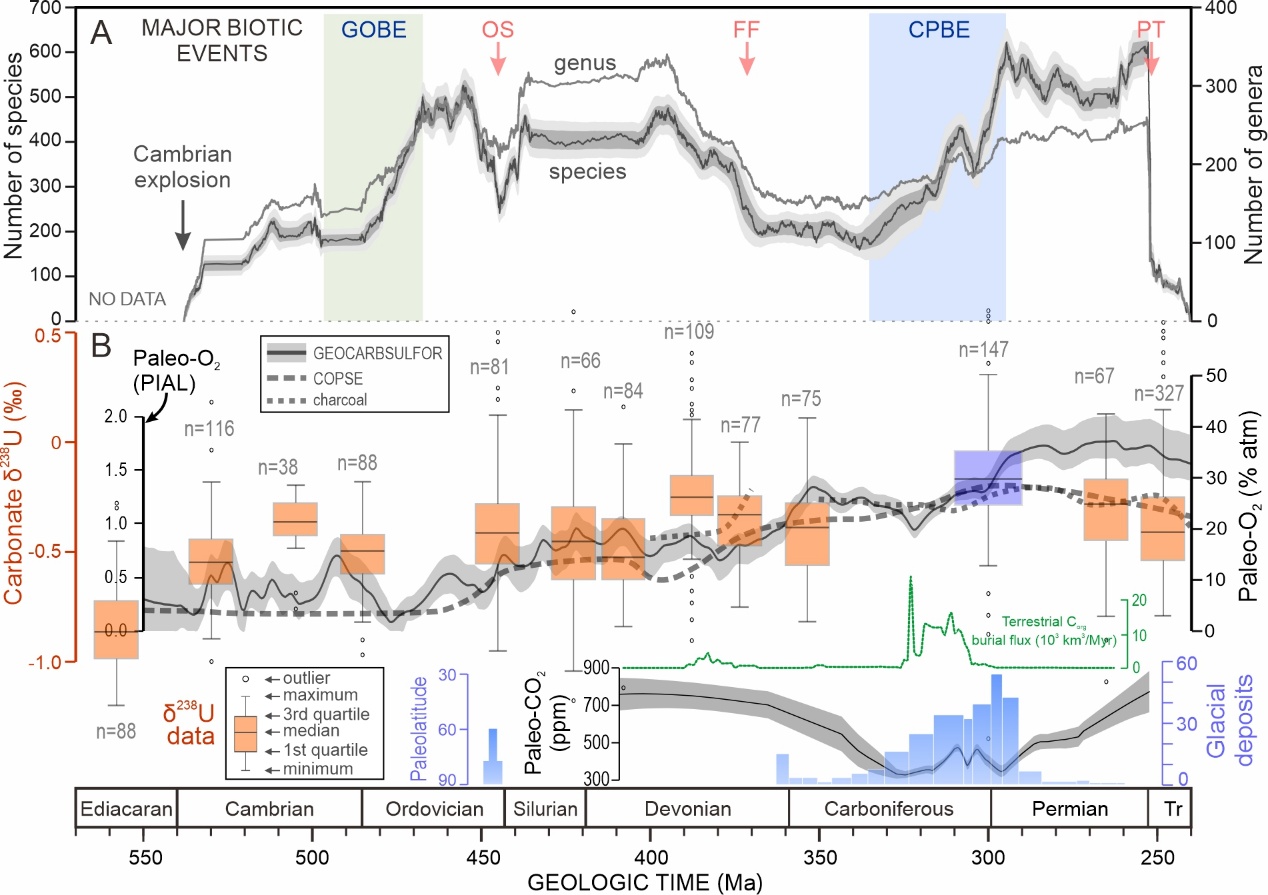2025-06-24 中国科学院(CAS)
 Fire history of Europe, East Asia, Southeast Asia and Papua New Guinea-Australia and age distribution of archaeological sites since the last 300,000 years. (Image by IOCAS)
Fire history of Europe, East Asia, Southeast Asia and Papua New Guinea-Australia and age distribution of archaeological sites since the last 300,000 years. (Image by IOCAS)
<関連情報>
- https://english.cas.cn/newsroom/research_news/earth/202506/t20250620_1045922.shtml
- https://www.pnas.org/doi/10.1073/pnas.2500042122
5万年前に人類による大規模な火災が発生 Onset of extensive human fire use 50,000 y ago
Shoushu Jiang, Debo Zhao, Stefanie Kaboth-Bahr, +12 , and Shiming Wan
Proceedings of the National Academy of Sciences Published:June 23, 2025
DOI:https://doi.org/10.1073/pnas.2500042122
Significance
Human mastery of fire in Quaternary played a pivotal role in early human evolution—improving dietary quality, enabling adaptation to cold environments, providing protection from predators, and shaping the social dynamics of our ancestors. Archaeological sites provide valuable insights regarding human fire use; however, their chronological gaps render the precise timing of large-scale fire utilization difficult to determine. Pyrogenic carbon deposited in marginal sea sediments, transported by major rivers traversing the continent, serves as a reliable proxy for continental-scale fire activity. By integrating pyrogenic carbon records with archaeological data, we propose that intensified human global expansion, population growth, and rising demand for fire use during cold glacials resulted in a surge in fire use since approximately 50,000 y ago.
Abstract
Fire is a pivotal aspect of human involvement in the carbon cycle. However, the precise timing of the large-scale human fire use remains uncertain. Here, we report a pyrogenic carbon record of East Asian fire history over the past 300,000 y from the East China Sea. This record suggests a rapid increase in fire activity since approximately 50,000 y ago, indicating a decoupling from the monsoon climate, and this pattern is consistent with fire histories in Europe, Southeast Asia, and Papua New Guinea-Australia regions. By integrating extensive archaeological data, we propose that the intensified global expansion of modern human and population growth, coupled with the rising demand for fire use during cold glacial periods, resulted in a significant increase in fire utilization from 50,000 y onward. This suggests that a measurable human imprint on the carbon cycle via fire likely predates the Last Glacial Maximum.



